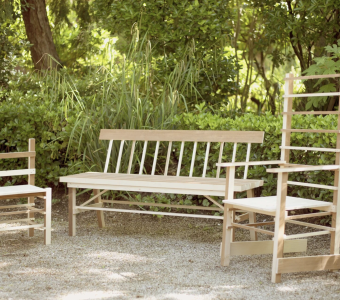Furniture explorations by Ania Jaworska and Norman Kelley featured in “American Framing” at The United States Pavilion at the Venice Architecture Biennal covered by The New York Times.
“Since the Venice Architecture Biennale had its inaugural presentation in 1980, technology — particularly computer-assisted design — has transformed the field. Perhaps it’s not surprising, then, that the event’s latest edition, on view from May 22 to Nov. 21, looks forward to more cutting-edge developments in ‘Future Assembly,’ a special exhibition billed as a look at a world that ‘both includes and exceeds humanity.’ The United States Pavilion, however, takes the opposite approach, looking backward to the rise of a simple, cheap and very analog building tradition. ‘American Framing,’ the pavilion’s show, which was commissioned by the University of Illinois Chicago, focuses on the softwood construction that became typically American in the 19th century. The exhibition emphasizes the democratic, anonymous qualities of the process, whose impact is still felt today: In 2019, 90 percent of homes completed in the United States were wood-framed.
Mr. Preissner and Mr. Andersen also commissioned new furniture pieces constructed in a similar way. Four wooden benches in the show were designed by the Chicago architect Ania Jaworska in collaboration with the students. The firm Norman Kelley created three pieces of seating, all loosely inspired by classic forms like Shaker furniture and Windsor chairs, from common lumber. Two of each design — a rocker, a bench and a chair — will be in the show, and time-lapse videos will show how they were formed from basic wood planks. ‘We have a deep sympathy for history,’ said Carrie Norman, who founded the firm with Thomas Kelley. ‘We’ve always been drawn to a slower and more analog process.'” Read the full article here.
